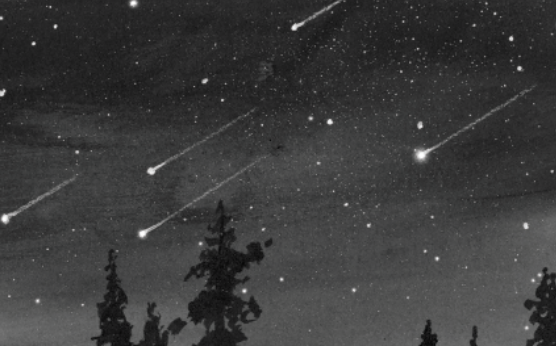
I’ve always loved the idea of watching the sky for shooting stars. But I’m much more likely to be up to watch the sunrise than I am to stay awake past midnight, when most meteor showers happen. Lucky for me, the upcoming Geminid meteor shower will provide an opportunity to wish upon a shooting star before my bedtime. Peaking from December 13 to 14, this year’s Geminids coincide with the dark sky of a new moon, which should make for great viewing — assuming the night is clear, of course.
“Many meteor showers are best in the hours after midnight,” said meteorologist Mark Breen, director of the Fairbanks Museum & Planetarium in St. Johnsbury, Vermont. “This particular meteor shower has the advantage of starting a little earlier, because the constellation Gemini, which is the radiant point of where these meteors come from, is already above the horizon by 9 o’clock in the evening. That means that really any time after 9 o’clock and through the rest of the night is a good time to look.”
Although many people refer to these lights that streak across the sky as “shooting stars,” they’re not stars at all. Meteors are particles that have broken off from comets or asteroids orbiting the sun. While comets comprise mainly ice with bits of embedded rock — sometimes described as “dirty snowballs,” Breen said — asteroids are mainly rock. In between, there is a wide range of ice-to-rock composition, which is where the parent asteroid of the Geminid shower — 3200 Phaethon — falls.
Whether originating as comet or asteroid, these meteors remain in orbit after separating from their parent form.
“Planets orbit the sun in close to a circular pattern, but for comets, it’s much more elliptical – zooming in very close to the sun, then zooming back out again,” Breen said. “The particles that break off the comet stay on that orbit all the time, and every time the Earth runs into those particles, we get a meteor shower.”
Scientists discovered and named 3200 Phaethon in 1983, and Breen described the Geminids as an “increasing” meteor shower, meaning each year seems to reveal a greater number of meteors. In the 1980s, he said, there were roughly 60 to 70 meteor sightings per hour during the Geminids’ peak. Now, that range is closer to 100 or more meteors per hour.
“It’s now become the most prolific meteor shower of the year,” Breen said, although he noted that August’s Perseid meteor shower is perhaps more popular, falling as it does during a warm season, with a higher likelihood of clear skies.
As with other meteor showers, the Geminids shower extends beyond its peak viewing dates. In this case, observant sky watchers may spot meteors streaking across the night sky from late November through around Christmastime, although they’ll be much less prevalent than during the sharp peak from Dec.13 to 14.
Breen offers a few tips for finding meteors, regardless of the season or specific shower. First, dress for a temperature of 20(F.) cooler than your thermometer indicates, as sitting outside at nighttime in any season doesn’t generate much body heat. Second — and this tip is key to success — allow time for your eyes to adjust completely to the dark, which may take 15 minutes or more. That means no porchlights or headlamps or looking at phone screens — even dimly lit ones can hinder your ability to see well in the dark. Third, find a spot with as expansive a sky view as possible, then sit back and look up. Although the Geminids meteor shower radiates from the Gemini constellation, Breen said it’s best to simply gaze upwards, rather than searching for a specific point in the sky.
As much as I love snow in December, I’m hoping this year the sky will stay clear during the peak of the Geminids, so I can bundle up and sit outside, looking up, and counting shooting stars.
Meghan McCarthy McPhaul is the associate editor of Northern Woodlands. Illustration by Adelaide Murphy Tyrol. The Outside Story is assigned and edited by Northern Woodlands magazine and sponsored by the Wellborn Ecology Fund of the New Hampshire Charitable Foundation: nhcf.org.



